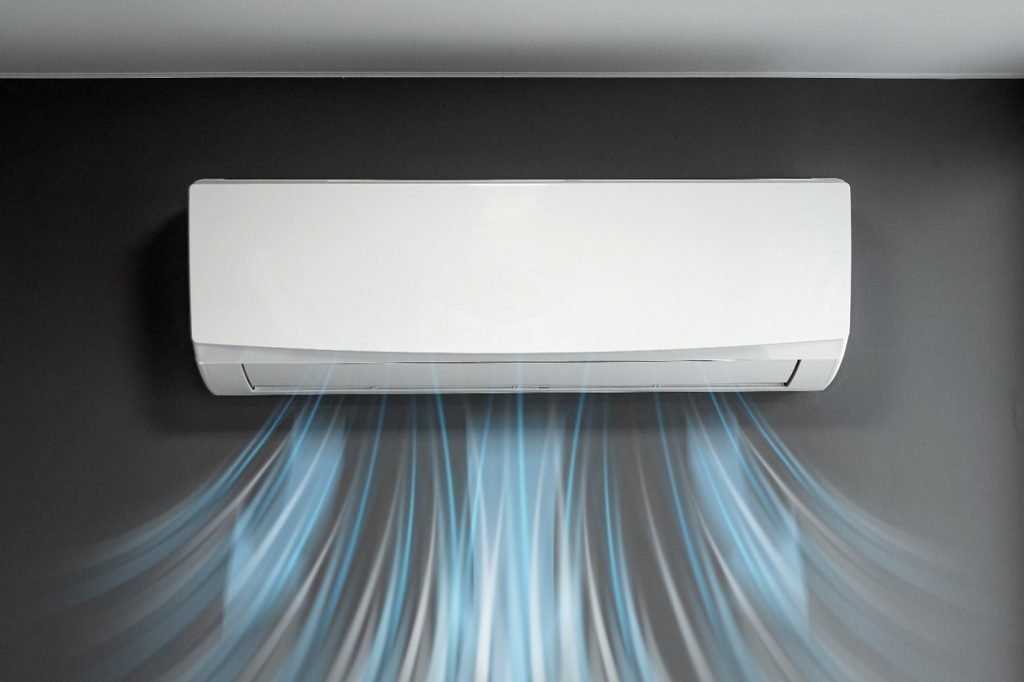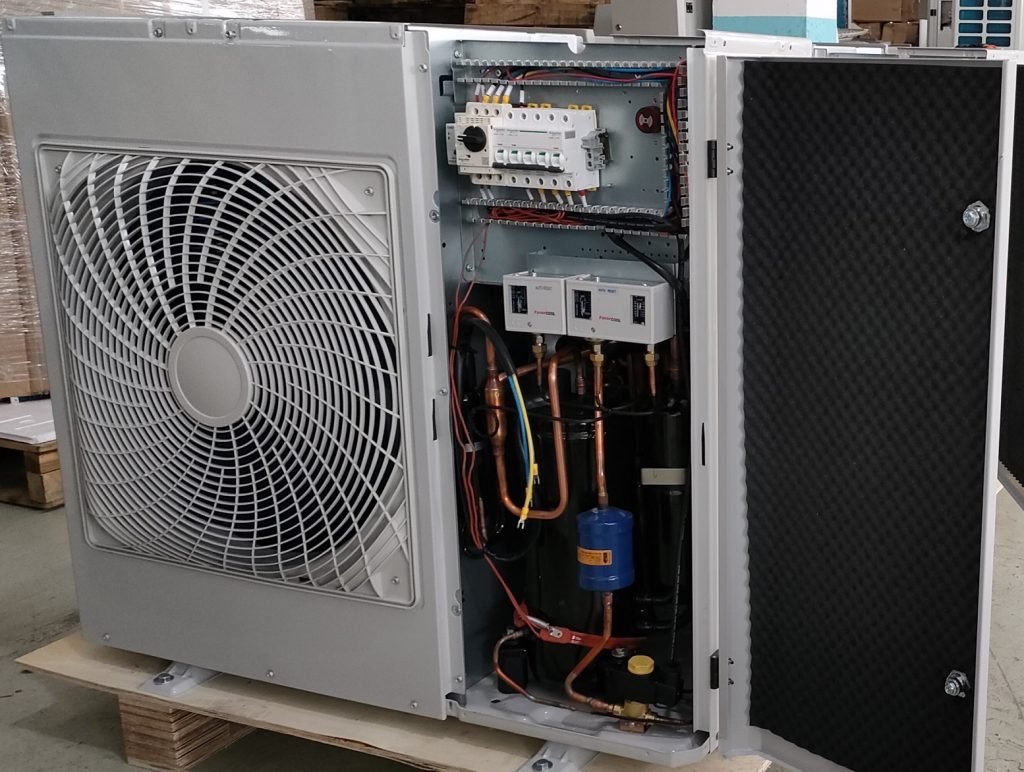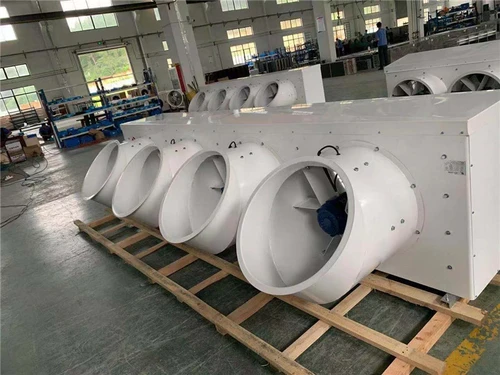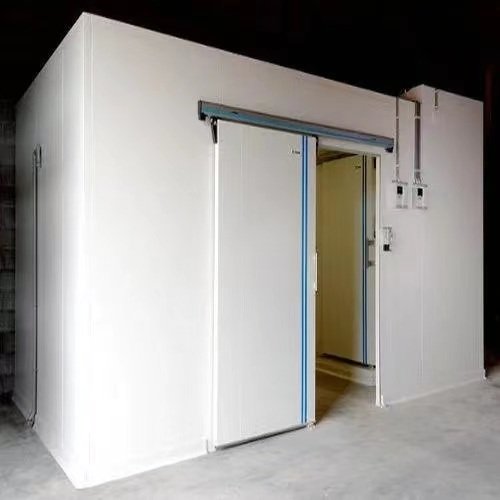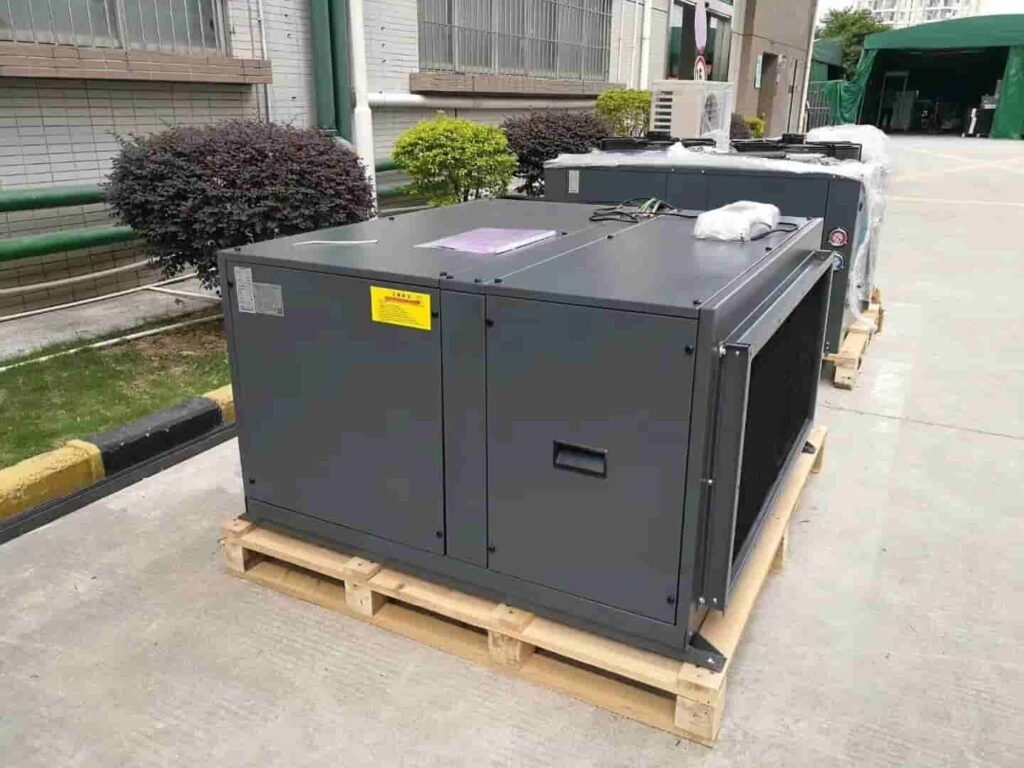과일과 채소의 저장 수명 연장 음식 쓰레기를 줄이는 데 필수적입니다., 영양 질 유지, 신선한 농산물의 꾸준한 공급을 보장합니다. 미국에서, 과일과 채소의 거의 절반이 낭비됩니다. 추운 방 저장, 여기에는 저온과 습도가 높을 수 있습니다, 생산의 자연 악화 과정을 늦추는 가장 효과적인 방법 중 하나입니다.. 이 안내서는 차가운 방에서 저장 시간을 극대화하기위한 모범 사례를 설명합니다..
과일과 채소 유형을 이해합니다
과일과 채소는 숙성 행동과 에틸렌 생산에 따라 분류 될 수 있습니다., 스토리지에 크게 영향을 미칩니다:
-
기후 과일: 이들은 수확 후에도 계속 익히고 에틸렌을 생성합니다, 숙성을 가속화하는 가스. 바나나가 있습니다, 사과, 복숭아, 그리고 토마토. 에틸렌 생산을 늦추기 위해 차가운 방으로 옮기기 전에 실온에서 익히도록하십시오..

-
비 임계 과일: 이들은 수확 후 더 익지 않으며 에틸렌에 민감합니다.. 그 예로는 포도가 포함됩니다, 블루 베리, 딸기, 감귤류 과일. 신선도를 보존하기 위해 즉시 추운 조건에 보관하십시오.
왜 중요한가: Climacteric 과일로부터의 에틸렌은 비 임계 과일과 에틸렌에 민감한 채소를 유발할 수 있습니다. (상추 나 브로콜리처럼) 함께 보관하면 더 빨리 망치십시오. 적절한 분리는 효과적인 스토리지의 핵심입니다.
콜드 룸 저장을위한 모범 사례
과일과 채소의 저장 수명을 연장하기 위해 추운 방, 이 일반적인 모범 사례를 따르십시오:
-
온도 제어:
-
대부분의 과일과 채소는 32 ° F ~ 55 ° F 온도에 보관해야합니다. (0° C ~ 13 ° C). 멋진 계절 작물 (예를 들어, 붉은 머리털, 사과) 32 ° F ~ 35 ° F를 선호합니다, 따뜻한 계절 농작물 (예를 들어, 토마토, 고구마) 냉각 부상을 피하려면 45 ° F ~ 55 ° F가 필요합니다.
-
정밀한 온도 제어 기능을 갖춘 차가운 방이나 냉장고를 사용하여 이러한 범위를 유지하십시오..
-
-
습도 조절:
-
높은 상대 습도 (80% ~ 95%) 수분 손실을 방지하는 데 필수적입니다, 시들고 부패를 일으킬 수 있습니다. 일부 상품, 잎이 많은 녹색처럼, 필요할 수 있습니다 95% ~ 100% 습기.
-
습도를 유지하는 방법에는 가습기 사용이 포함됩니다, 바닥을 적시고, 또는 물의 용기를 추운 방.
-
-
농산물 분리:
-
Climacteric을 저장하십시오 (에틸렌 생산) 에틸렌에 민감한 항목 별도. 예를 들어, 조기 숙성 또는 부패를 방지하기 위해 사과 나 상추에서 바나나를 멀리 두십시오..
-
차가운 방에서 별도의 서랍이나 선반을 사용하여 다양한 유형의 농산물을 사용하십시오..
-
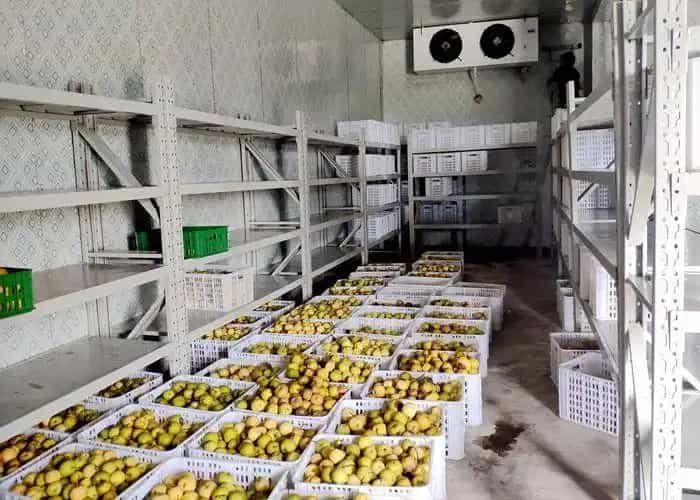
-
저장 용기 및 가방:
-
Climacteric 농산물을 닫힌 백이나 용기에 보관하지 마십시오, 에틸렌이 축적되어 부패를 가속화 할 수 있습니다. 더 나은 공기 순환을 위해 천공 가방 또는 열린 용기를 사용하십시오..
-
비 임계 농산물은 가방에 안전하게 저장 될 수 있습니다, 그들이 중요한 에틸렌을 생산하지 않기 때문입니다.
-
일반적인 과일과 채소에 대한 특정 저장 조건
과일과 채소에는 고유 한 저장 요구 사항이 있습니다. 아래는 일반적인 상품에 대한 특정 조건의 표입니다.:
|
상품 |
온도 (°F) |
상대 습도 (%) |
스토리지 수명 |
빙점 (°F) |
|---|---|---|---|---|
|
사과 |
30–40 | 90–95 |
1–12 개월 |
29.3 |
|
아스파라거스 |
32–35 | 95–100 |
2–3 주 |
30.9 |
|
브로콜리 |
32 | 95–100 |
10–14 일 |
30.9 |
|
붉은 머리털 (성숙한) |
32 | 98–100 |
7–9 개월 |
29.5 |
|
토마토 (성숙한, 녹색) |
55–70 | 90–95 |
1–3 주 |
31.0 |
|
고구마 |
55–60 | 85–90 |
4–7 개월 |
29.7 |
-
키 노트:
-
멋진 계절 작물 (예를 들어, 사과, 붉은 머리털) 낮은 온도에서 저장할 수 있습니다 (32° F ~ 35 ° F).
-
따뜻한 계절 작물 (예를 들어, 토마토, 고구마) 더 높은 온도가 필요합니다 (45° F ~ 55 ° F) 냉각 부상을 피하기 위해, 물을 담그거나 부패하는 것과 같은 증상을 유발할 수 있습니다.
-
높은 습도 (90% ~ 100%) 대부분의 야채는 시들음을 방지하는 데 중요합니다.
-
처리 및 준비 팁
저장 전후에 적절한 취급은 저장 수명에 크게 영향을 줄 수 있습니다.:
-
세탁:
-
박테리아 성장을 방지하기 위해 과일과 채소를 건조하게 보관하십시오. 소비 직전에 씻으십시오, 저장 전이 아닙니다.
-
슈퍼마켓과 달리, 양상추 및 브로콜리와 같은 야채의 환기로 미스트 시스템을 사용합니다., 가정 저장은 곰팡이를 방지하기 위해 과도한 수분을 피해야합니다.
-
-
치료:
-
야채, 감자와 고구마처럼, 저장 전 경화로 이익. 60 ° F ~ 68 ° F에서 감자를 치료하여 어두운 곳에서 1-2 주 동안, 상처를 치유하고 저장 수명을 향상시키기위한 잘 통풍이 잘되는 지역.
-
맛과 저장 수명을 향상시키기 위해 고구마를 1-2 주 동안 80 ° F로 치료해야합니다..
-
모니터 및 유지 보수
정기적 인 모니터링은 최적의 저장 조건을 보장합니다:
-
도구:
-
온도계를 사용하십시오 (예를 들어, 기록 또는 최대/최소 유형) 온도를 모니터링합니다.
-
상대 습도를 측정하려면 히그로미터 또는 슬링 사이드 미터를 사용하십시오..
-
-
유지:
-
부패의 징후를 정기적으로 확인하고 감소의 확산을 방지하기 위해 영향을받는 농산물을 제거하십시오..
-
적절한 환기를 보장하십시오 추운 방 공기 순환을 유지합니다.
-
대규모 차가운 방의 경우, 콜드 체인의 약점을 해결합니다 (예를 들어, 운송 또는 보관 중 온도 변동) 품질을 유지합니다.
-
피해야 할 일반적인 실수
저장 시간을 극대화하기 위해 이러한 일반적인 오류를 피하십시오:
-
기후 및 비 기발성 농산물을 함께 보관합니다: 이것은 민감한 품목의 조기 숙성 또는 부패로 이어질 수 있습니다..
-
에틸렌 생성 과일을위한 폐쇄 용기를 사용합니다: 에틸렌 축적은 부패를 가속화 할 수 있습니다.
-
잘못된 온도: 너무 낮은 온도에 따뜻한 계절 작물을 저장하면 차가워 질 수 있습니다., 더 높은 온도에 시원한 계절 작물을 저장하는 동안 더 빠른 부패가 발생할 수 있습니다..
-
무시하는 습도 제어: 습도가 낮 으면 수분 손실이 발생할 수 있습니다, 과도한 습도는 곰팡이 성장을 촉진 할 수 있습니다.
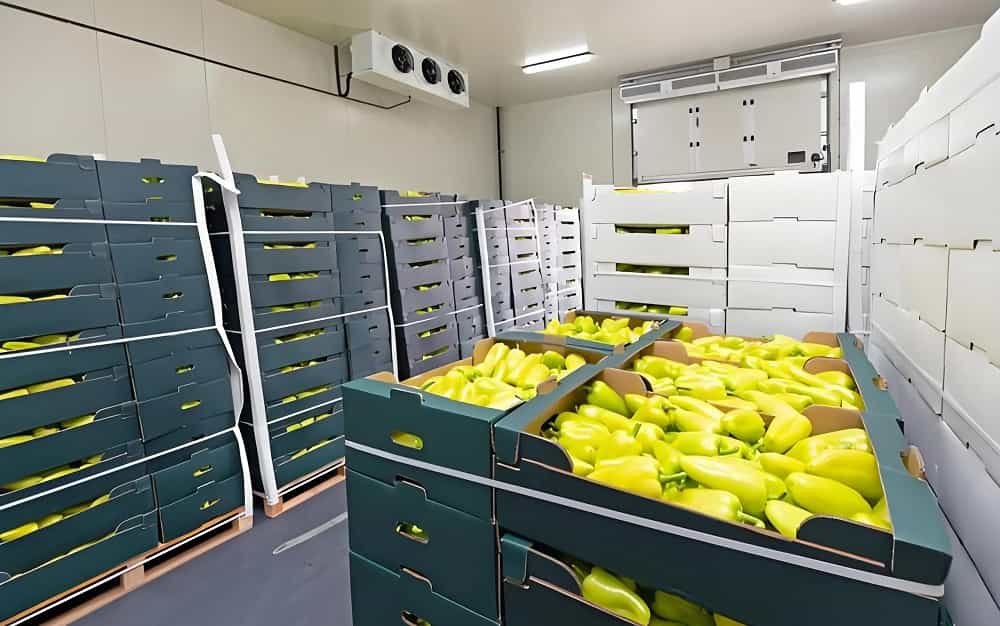
결론
이러한 모범 사례를 따르면, 과일과 채소의 저장 수명을 추운 방, 폐기물을 줄이고 신선한 꾸준한 공급을 보장합니다, 영양가있는 농산물.
각 유형의 농산물의 특정 요구에 맞게 저장 조건, 조심스럽게 처리하십시오, 저장 조건을 정기적으로 모니터링합니다.
작은 조정은 품질과 신선도를 보존하는 데 큰 차이를 만들 수 있습니다..
다른하실 말씀 있나요?
환영합니다 메시지를 남기거나 다시 게시.
핵심 인용:



